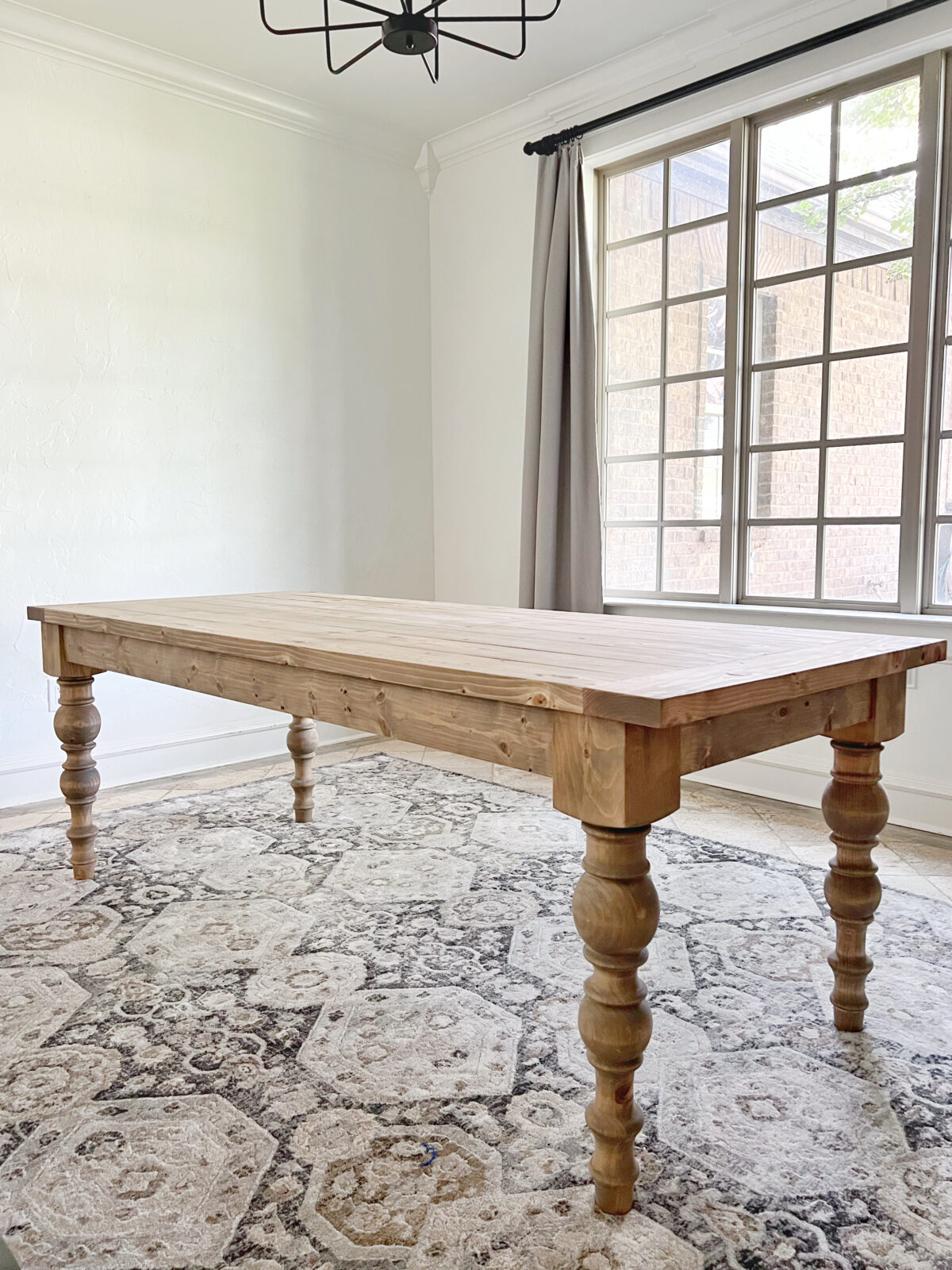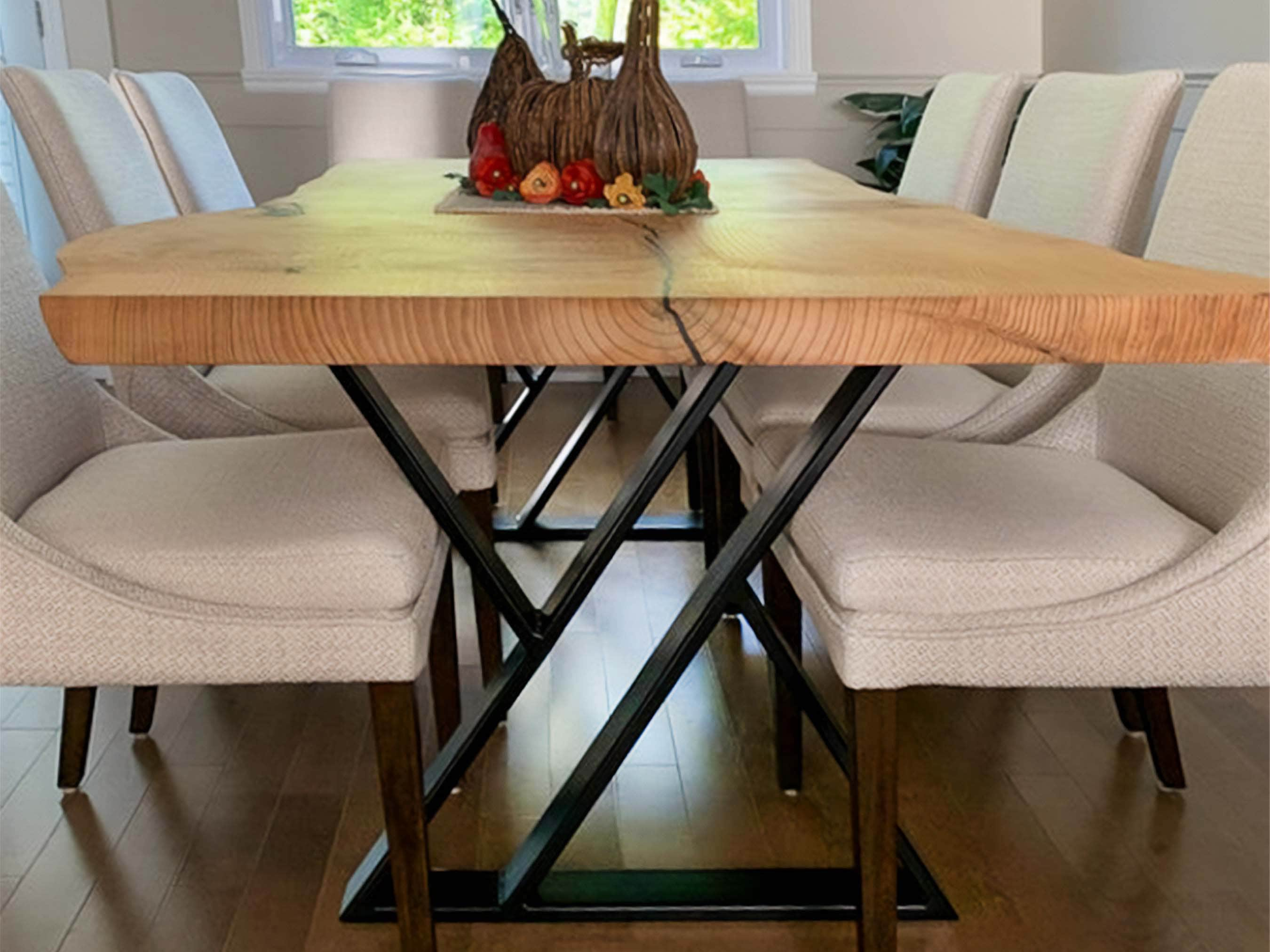Exploring Different Styles for Dining Room Table Legs to Suit Your Visual
Exploring Different Styles for Dining Room Table Legs to Suit Your Visual
Blog Article
Selecting the Perfect Table: What Styles Job Best for Your Home?
Selecting the ideal eating table for your home can be a nuanced process that stabilizes looks and performance. Whether your space leans in the direction of conventional elegance, contemporary minimalism, rustic charm, or commercial trendy, the selection of styles readily available can deal with varied tastes. Each layout provides unique benefits and difficulties that can either improve or disrupt your eating area's harmony. Recognizing exactly how various materials, forms, and dimensions communicate with your existing style is important. To browse these selections efficiently and find a table that truly complements your home, think about the adhering to facets thoroughly.
Assessing Your Space
Examining the measurements and design of your eating area is an essential primary step in picking the excellent table. Begin by gauging the size and width of the space, making up entrances, home windows, and various other architectural attributes that could affect table placement. This guarantees that your table not only fits yet also enables comfy motion around it.
Think about the number of people you generally amuse. A table needs to suit your household's daily demands while offering enough versatility for occasional visitors. As a policy of thumb, allocate at the very least 24 inches of table width per person to make certain a comfortable dining experience.
It's also necessary to keep suitable clearance around the table. Preferably, there must go to the very least 36 inches in between the table side and walls or other furnishings, enabling easy access and activity. For spaces where chairs with arms or added storage devices like buffets are entailed, raising this clearance to 48 inches is suggested.
Illumination and ambience play substantial functions also. Make sure that your dining table aligns with existing lighting components or plan for appropriate lights services. This detailed spatial analysis guarantees that your eating table not just fits literally but additionally balances with your space's overall performance and aesthetic.
Popular Table Styles

Conventional table typically include elaborate details, curved legs, and abundant wood surfaces, stimulating a sense of classic elegance. They are excellent for homes with traditional decoration or those seeking to add a touch of sophistication to their dining area.
Modern dining tables prioritize simpleness and clean lines, usually incorporating products like glass and steel. These tables are perfect for modern rooms, providing a streamlined and uncluttered appearance that enhances minimal style philosophies.
Rustic table, on the other hand, highlight all-natural products and a handmade appearance - dining room table legs. They frequently include reclaimed timber and a distressed coating, developing a warm and welcoming ambience. These tables function well in farmhouse-style homes or those looking for a cozy, organic feel
Industrial dining tables incorporate raw products such as steel and wood, often showcasing a practical aesthetic. This style is well-suited for lofts or urban areas, adding a touch of sturdy appeal and longevity to the eating experience.
Each design supplies unique benefits, making it necessary to pick one that straightens with your home's total layout and your individual choices.
Product Options
When selecting a table, the selection of product plays an important role in establishing both the table's visual appeals and capability. Timber, metal, glass, and composite materials each official site offer distinct benefits and challenges, making it imperative to align the material with your home's style and way of life requirements.
Wood is a classic and flexible alternative, available in varieties such as oak, walnut, and mahogany. Known for its resilience and heat, wood enhances both conventional and contemporary insides. It calls for regular maintenance to prevent scrapes and bending.
Metal tables, often crafted from stainless steel, aluminum, or wrought iron, are praised for their contemporary charm and robustness. They are especially matched for industrial or minimal settings but can be prone to damages and might feel cool to the touch.
Glass table bring an air of sophistication and openness, perfect for smaller areas as they develop an illusion of more area. While simple to tidy, glass can be prone to spots and calls for cautious dealing with to stay clear of chips and cracks.
Composite materials, such as click for info MDF and plywood, their explanation offer affordable and customizable options, though they may do not have the longevity of all-natural products. Selecting the best material ensures your table is both a practical asset and an aesthetic delight.
Forming and Size Factors To Consider
After identifying the appropriate product for your dining table, the next consideration is picking the best sizes and shape to suit your room. The form of the table considerably influences the space's aesthetic and capability. Rectangle-shaped tables, the most usual shape, are perfect for bigger rooms and can suit a greater number of visitors. They additionally enable an extra formal dining experience. Alternatively, rounded tables cultivate a feeling of intimacy and are superb for smaller sized eating locations, urging conversation by removing edges and making everybody really feel equally included.
Dimension is just as essential and must be dictated by both the room's dimensions and the number of individuals you prepare to seat routinely. As a guideline of thumb, assign at the very least 24 inches of table size per person to guarantee comfy dining. Furthermore, consider the table's clearance space: there must go to the very least 36 inches between the table side and the wall surfaces or other furniture. This ensures that restaurants can move easily without really feeling cramped. Prolonging tables offer versatility if you often host larger events, supplying extra seating when required without inhabiting additional room daily. Choosing the ideal shape and size ensures both usefulness and aesthetic harmony in your eating area.
Matching Your Decoration
Choosing an eating table that balances with your existing style is critical in developing a cohesive and inviting area. A sleek, minimalist table with tidy lines is perfect for a contemporary home, while a vintage, ornate table fits an extra traditional setting.
Shade and material are similarly substantial. If your decor features cozy tones and all-natural materials, think about a wood table to enhance the natural feeling. Conversely, a glass or metal table might be more proper in a room controlled by awesome shades and industrial aspects. Take note of the coating, as it should mirror other furniture and components to preserve consistency.
Structure plays a vital function. A rough-hewn, recovered timber table can add character to a rustic space, while a sleek marble surface can elevate a glamorous dining area. Consider the scale and percentage of the table in relationship to the space size and existing furniture. A well-matched eating table not just boosts aesthetic charm but also improves the total dining experience.

Verdict
Choosing the ideal eating table requires careful factor to consider of space, style, products, shape, and dimension. Standard tables complement timeless insides with abundant timber coatings, while modern tables fit contemporary settings with glass and metal.
Report this page